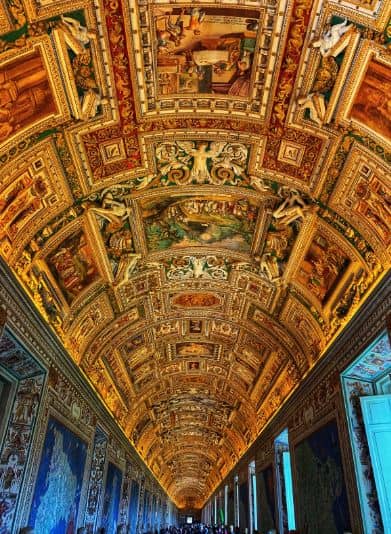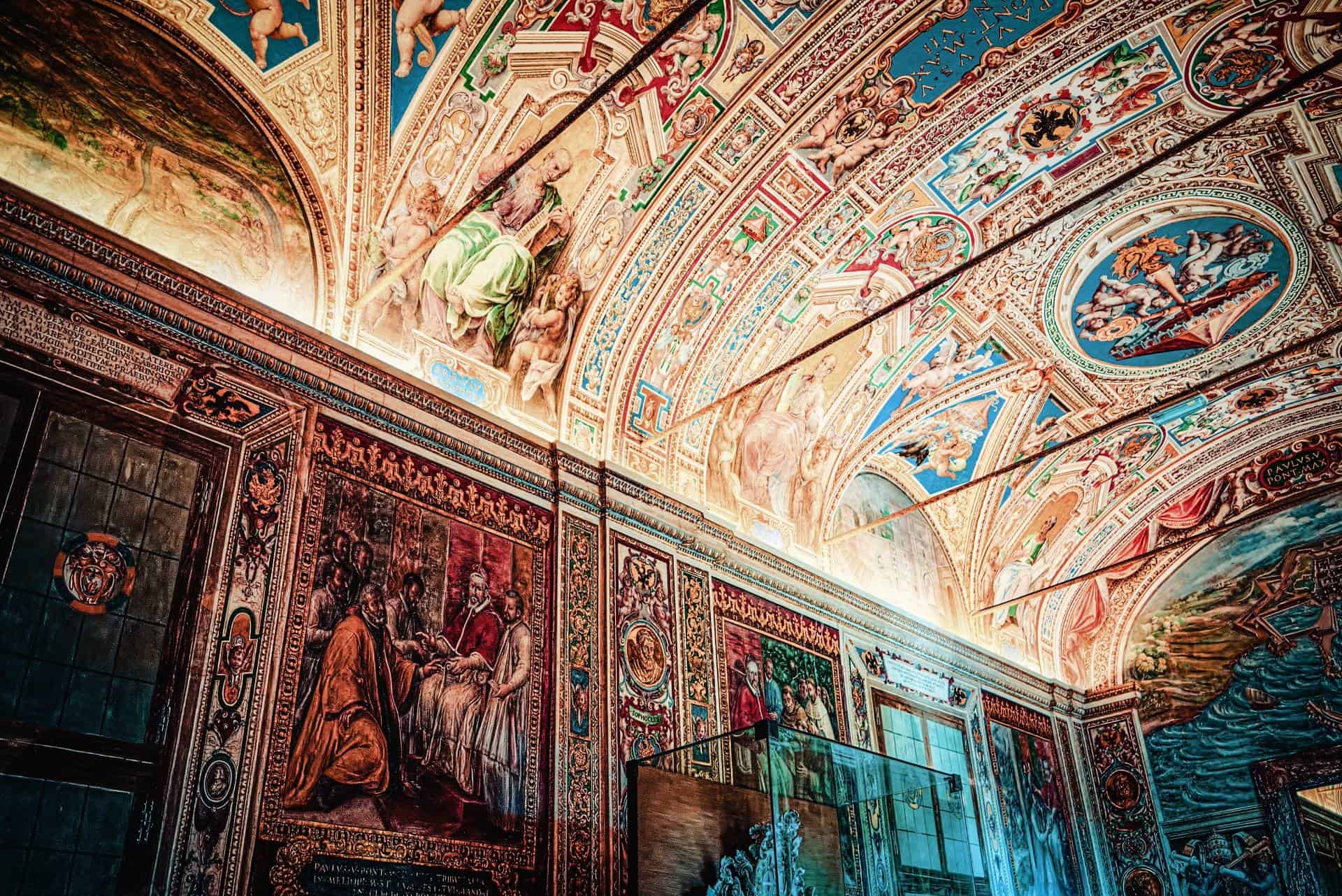The Gallery of Tapestries in the Vatican Museums is a breathtaking corridor lined with an extraordinary collection of large, intricately woven tapestries. This long gallery, which stretches nearly 75 meters, was designed in the 16th century during the papacy of Pope Clement VII and is one of the highlights of the museum’s collection. The tapestries were originally crafted in Brussels by the renowned Flemish weavers of the workshop of Pieter van Aelst, based on designs by students of Raphael.
These tapestries depict scenes from the life of Christ, the apostles, and various biblical events, showcasing a combination of vivid colors and exquisite detail that bring the stories to life. The craftsmanship is remarkable, with rich textures and complex compositions that demonstrate the skill and artistry of the weavers. One of the most famous tapestries is the depiction of the Resurrection of Christ, which seems to change perspective as you walk by, creating a fascinating optical illusion.
The Gallery of Tapestries is part of the Vatican Museums’ main route and provides visitors with an opportunity to appreciate the luxurious and symbolic nature of Renaissance-era textile art. Each tapestry is a masterpiece in its own right, offering a glimpse into the wealth and grandeur of the papal court during the Renaissance.




